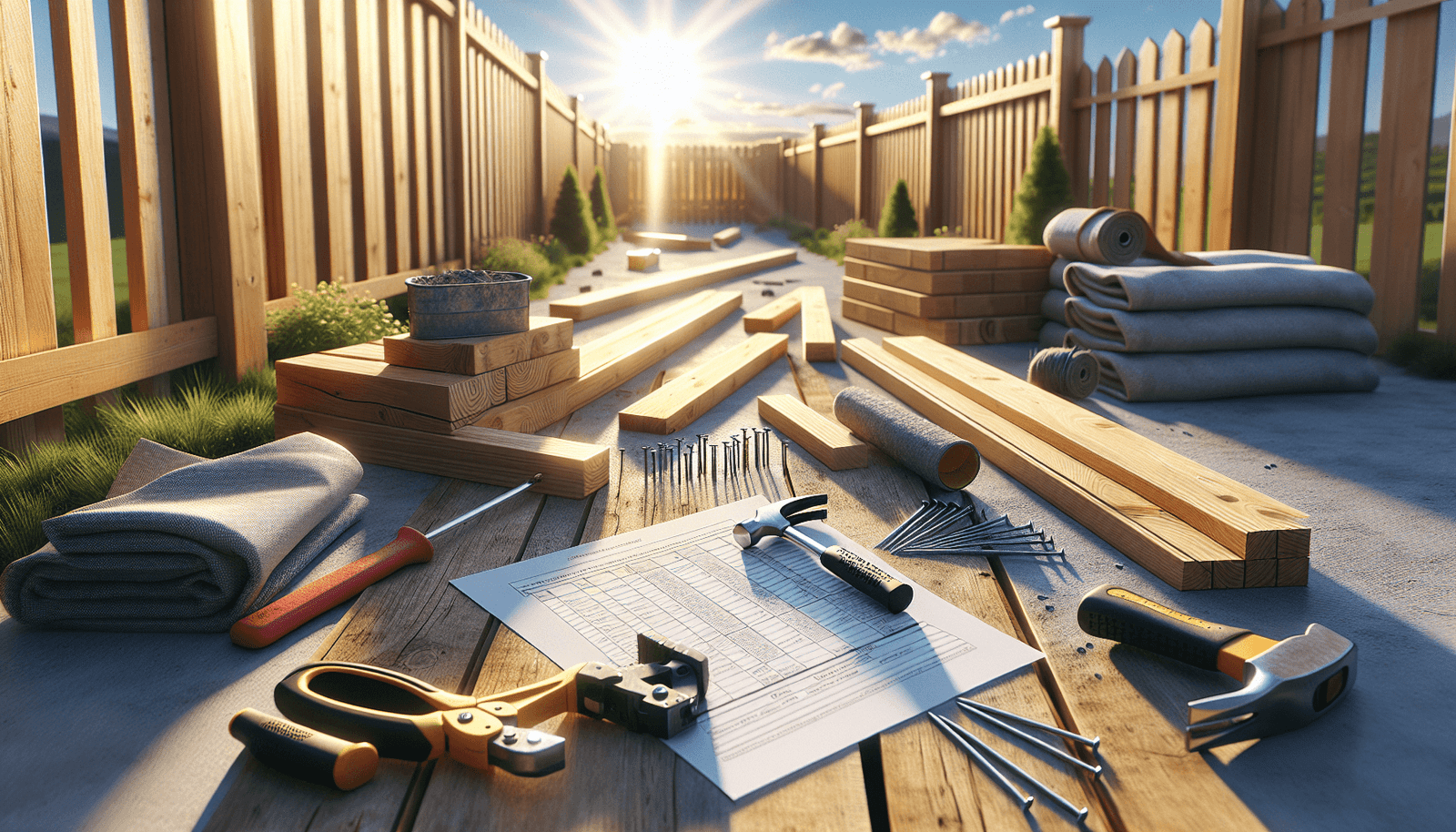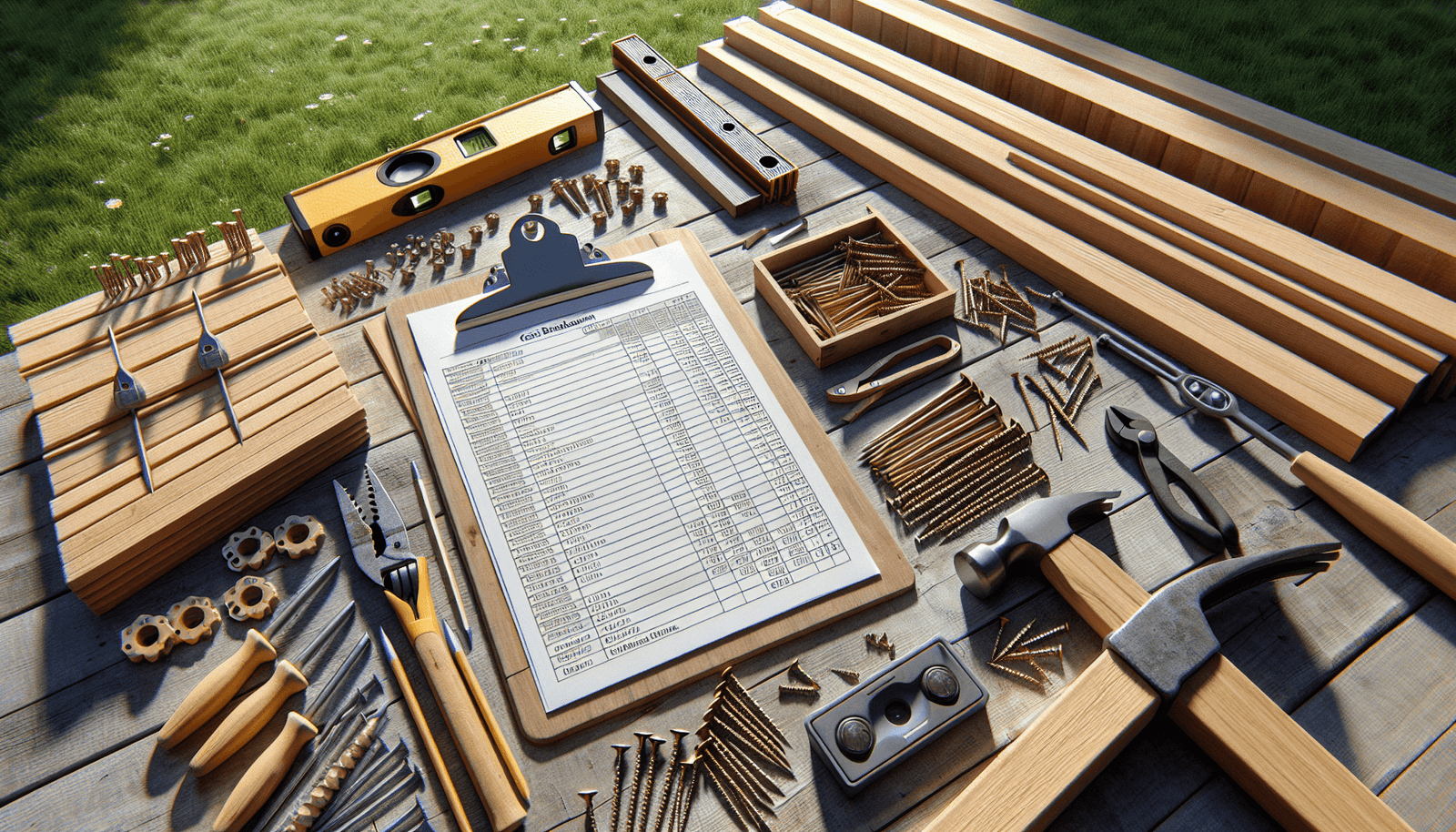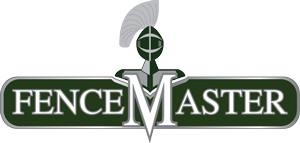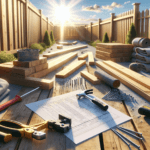
Embarking on a fencing project requires careful consideration of various factors that influence overall expenses. A comprehensive pricing guide can serve as a valuable resource for homeowners aiming to budget effectively.
Different materials, including wood and vinyl, play a significant role in the cost breakdown, warranting thorough evaluation.
The size of the property and the specifics of the desired residential fencing can greatly impact total costs.
Familiarizing yourself with these pricing elements is key to preventing unexpected financial surprises, whether you are exploring options for residential fencing or larger commercial fencing projects.
Click here to learn more about: residential.html
Understanding The Cost Factors For Fence Installation
Building on the foundational knowledge of expenses covered previously, it is essential to understand how various elements directly impact the overall financial commitment related to fence installation. Among the most significant is material costs, which can greatly affect your budget depending on the choice of fencing supplies.
Different fencing types bring their own qualities, functionality, and durability, influencing the total investment. For example, wood provides a classic look that many people prefer, while chain link offers a more cost-efficient option without sacrificing important safety features. Vinyl and ornamental iron are also favored selections, with each offering distinct benefits to a project.
Labor expenses can vary widely, driven by geographic factors and the complexity of the installation process. Regions with higher demand may see increased contractor fees, while custom solutions that require quality craftsmanship can further raise total costs. This aspect is crucial to consider when planning projects that involve gate installation or detailed designs.
Additionally, understanding further pricing factors such as maintenance costs, installation fees, and warranty options is key for budget planning. The overall landscape of expenses shapes your project scope and should be thoroughly researched to prevent hidden costs later on. By evaluating each element, homeowners can create accurate project estimates and make well-informed decisions regarding their fencing needs.

Key Elements That Impact Installation Pricing
Having explored the essential aspects of fencing costs in earlier discussions, it’s important to consider the specific components that influence the final pricing of your fence installation project. A complex mix of factors affects the total price, starting with labor expenses that significantly shape your budget.
Local rates and the expertise of contractors can vary, impacting your overall investment. For instance, installing ornamental iron fencing may require specialized skills, leading to increased costs. Additionally, the complexity of different fencing types can alter the estimated time needed for installation, resulting in either higher or lower contractor fees.
Site conditions also play a crucial role; for example, uneven terrains such as hills or rocky areas can incur extra expenses due to the additional labor and time necessary for projects involving vinyl or aluminum materials. Considerations such as fence height, zoning regulations, and any required permits will further influence costs.
Furthermore, understanding market trends can provide insights into the demand for specific fencing styles, impacting prices. By evaluating these key elements, homeowners can develop accurate project estimates while effectively planning their budget for a variety of fencing options that meet their needs.
Detailed Breakdown Of Fencing Material Expenses
Continuing from the crucial elements discussed earlier regarding installation costs, evaluating the financial aspects of fencing materials is vital for a successful home improvement project. A thorough assessment of these expenses highlights how diverse material choices affect both budgeting and long-term financial planning.
Impact of Material Choices on Costs
Quality and availability can significantly influence the pricing of fencing supplies, making it essential for maintaining your project’s budget. For instance, while wood may enhance aesthetic appeal and provide a warm, natural look, it generally requires more frequent repair services and maintenance, potentially increasing overall costs.
Durability and Upfront Investment
On the other hand, vinyl fencing stands out for its resilience and long-lasting durability, characteristics that often justify a higher initial investment. Choosing materials like aluminum or ornamental iron can also lead to lower long-term maintenance costs due to their durability and resistance to environmental factors.
Making Informed Decisions
Conducting a value assessment of these elements will facilitate better project estimates and promote informed decision-making while staying within budgetary constraints. Additionally, keeping in mind various pricing factors, such as installation complexity and local suppliers, can further optimize the cost breakdown, ensuring that homeowners make the most out of their investment in residential fencing.
Labor Costs Involved In Fence Installation
Building on the insights about material expenses and their implications on budget planning, it’s important to examine how labor factors greatly contribute to the total costs of residential fencing projects. Understanding labor expenses is essential, as they can vary widely due to many influencing elements, directly affecting overall installation fees.
For example, if you choose wood for your fencing project, you may find that it requires quality craftsmanship and more time, compared to installing simpler options like chain link. This complexity not only impacts contractor fees but can also determine the final cost breakdown of your installation.
Site accessibility and terrain challenges are additional factors that can impact labor efficiency. If installation takes place in difficult conditions, it may increase maintenance costs and project estimates due to the additional effort and time required for completion.
It’s also important to consider any hidden costs connected with quality craftsmanship, which might include necessary preparations and cleanup actions. By accurately evaluating these aspects, homeowners can confidently make informed decisions and explore custom solutions that match both their aesthetic preferences and budget planning.
Comparing The Costs And Benefits Of Various Fencing Types
Understanding Fencing Options
Following the analysis of labor expenses and material costs, a careful look at fencing options can lead to informed decisions that enhance both property value and security. Each type of fencing presents unique features, catering to various aesthetic desires and practical requirements.
Wood Fences
Wood fences provide significant visual appeal and a warm, natural atmosphere, but they often come with higher ongoing maintenance costs due to the need for regular repairs and potential replacements. Homeowners should factor in costs related to upkeep, which can impact overall budget planning.
Aluminum Fences
Aluminum, on the other hand, offers robust rust resistance and a lightweight design, making it a popular choice for those seeking durable materials and low maintenance. This fencing type is known for its longevity, appealing to those who want a long-lasting solution.
Pricing Factors and Regulations
When examining the pricing factors associated with these different fencing types, it’s essential to consider not only the initial investments but also the long-term expenses tied to upkeep. Homeowners should be aware of how local zoning regulations may influence fence height and installation details, ensuring that their choices align with neighborhood codes while still expressing personal style.
Material Choices and Supplier Access
Furthermore, accessibility to local suppliers can impact the availability of specific material choices, affecting both the cost breakdown and installation timeline. Homeowners can compare options like vinyl, ornamental iron, and chain link fencing, weighing their benefits against price and long-term value. Understanding these materials helps in making informed decisions that cater to both budget and design preferences.
Final Considerations
Overall, understanding the nuances of each option allows for a smooth integration of fencing styles that meet both budget needs and aesthetic goals. Making a well-informed choice ensures that the selected fencing will not only enhance the property’s visual appeal but also provide essential safety features.
Influencing Factors For Residential Fence Pricing
In light of our earlier discussion regarding the costs and benefits of different fencing options, it’s crucial to recognize that certain elements significantly dictate residential fence pricing. These factors are instrumental in budget planning and ensure homeowners can make informed choices.
Material selection plays a vital role, as choices like wood and vinyl have different material costs, affecting both initial and ongoing expenses.
Dimensions and length directly impact overall costs. Larger projects naturally require higher financial investments.
Features such as gate installation and added safety enhancements can further increase total pricing. Additionally, potential changes in labor expenses—often affected by site conditions and variability in contractor fees—will also influence the final cost breakdown.
Understanding these elements will help promote smarter decisions when selecting the ideal fence for your property. By being aware of these factors, you can better prepare for the financial implications tied to your fencing choices. Analyzing these costs can help uncover hidden costs and identify strategies for achieving quality craftsmanship and project success.
Property Boundary Selection
- Material choice: Costs vary, especially between wood and vinyl.
- Dimensions and length: These are directly proportional to overall expenses.
- Additional features: Gates and safety enhancements can significantly increase your investment.
- Labor fees: Installation costs can change based on site conditions and contractor rates.
The Financial Impact Of Gate Installation On Overall Costs
Building on the earlier discussion about various aspects influencing residential fencing pricing, the addition of a gate is a key financial factor that can reshape your total costs. A gate not only boosts the visual appeal of your property but also improves safety features.
When looking at gate installation costs, it’s important to examine materials, labor expenses, and extra features. Choosing sturdy materials, like wood or vinyl, can affect both initial outlay and future maintenance costs.
While some homeowners may choose DIY options to reduce costs, working with local suppliers guarantees access to quality craftsmanship and stronger materials. This ultimately contributes to the project’s longevity. Additionally, considering landscaping aspects and obtaining the correct fence permits are crucial for accurately estimating both initial expenses and potential maintenance needs.
Being aware of these details helps homeowners with better budget planning. Market trends and geographic influence also affect seasonal pricing variations. By anticipating these factors related to gate installation, homeowners can protect their investments and boost the overall value assessment of their fencing solutions.
Seasonal Variations In Fencing Pricing Trends
Understanding seasonal pricing trends is crucial when planning for residential fencing projects. Throughout the year, demand can vary significantly, especially in spring and summer when many homeowners seek professional installation. This increase in interest leads to higher costs, making it essential for property owners to plan ahead.
The late fall and winter months often present excellent opportunities for consumers to secure discounts and negotiate better rates, as contractors seek to fill their schedules during these slower periods. By scheduling fencing installation during off-peak seasons, homeowners can often benefit from lower costs and improved project estimates.
Timing installations not only enhances potential savings but also can positively influence the overall quality of the work done. Choosing to install in milder weather conditions often results in better fencing longevity and boosts customer satisfaction with the final design. This careful planning can lead to a rewarding experience for property owners looking to invest in quality fencing solutions.
Seasonal Pricing
- Demand for professional installation increases during spring and summer, leading to higher prices.
- Late fall and winter months often offer opportunities for discounts and better rates.
- Timing of installation can greatly impact the quality and longevity of the fence.
- Customers can benefit from off-peak seasons to negotiate improved pricing options.
Budgeting Strategies For Customized Fencing Solutions
After examining the financial impact of gate installation and the seasonal variations in pricing trends, it’s important to use effective budgeting strategies for your fencing project. Start the budgeting process with a detailed value assessment of various fencing types, such as wood, vinyl, or ornamental iron, along with their respective pricing guide.
Clearly outlining your project scope helps avoid unexpected costs during installation. It’s also smart to prioritize essential features over optional enhancements, promoting better cost efficiency. As market trends change, staying informed will assist you in navigating pricing shifts and making informed decisions.
Obtaining multiple estimates from local suppliers or contractors enables you to find the best ways to stay within your budget without overspending. This not only supports budgeting but also aids in understanding the details of contractor fees and material costs involved in your project.
Using these planning methods is vital for successfully completing a fencing project that meets your taste and financial requirements. Combining insights from market trends with a thoughtful budget lays the groundwork for lasting satisfaction and improved fence longevity.
The Significance Of Quality Craftsmanship For Fence Longevity
Understanding the Importance of Quality Work
Building on the importance of budgeting and seasonal pricing, quality craftsmanship plays a crucial role in ensuring that your residential fencing project achieves its intended value. A well-constructed fence not only serves its functional purpose but also significantly reduces hidden costs associated with frequent repairs and replacements.
Combining Durable Materials with Expert Installation
When durable materials such as wood, vinyl, or ornamental iron are paired with skilled installation techniques, your fence gains the strength to endure various environmental challenges. This vital combination ensures that the fence remains intact and visually attractive, contributing to customer satisfaction over time.
Benefits of Investing in Quality Craftsmanship
Homeowners are increasingly aware that investing in durable materials and skilled installation leads to higher fence longevity and performance. It’s important to note that the level of expertise applied during the installation process directly affects not just the material’s durability but also its overall maintenance costs and aesthetic appeal.
Enhancing Safety and Property Value
Furthermore, a meticulously crafted fence enhances property safety while positively impacting the surrounding landscaping. Choosing fencing styles that comply with zoning regulations can enrich property value and satisfaction. By considering these factors, homeowners can make informed decisions that ensure a successful and visually appealing fencing installation.
EcoFriendly Fencing From Fencemaster Houston
Aluminum Vs Iron Fences Which Is Best For Your Property At Fencemaster Houston


